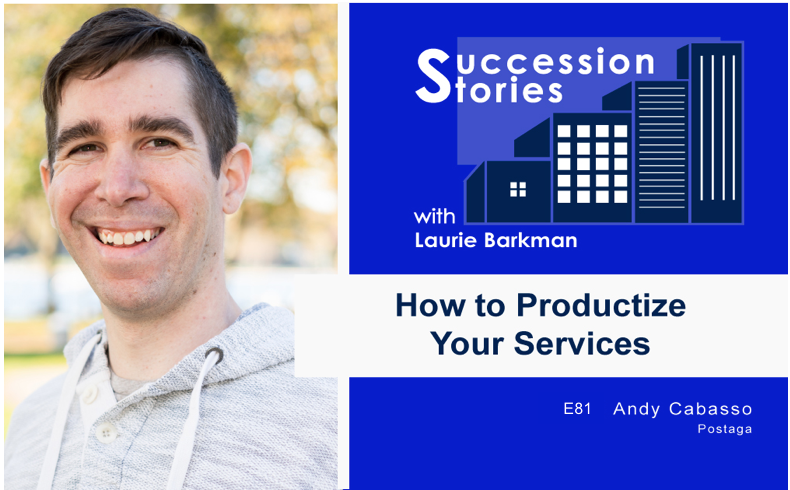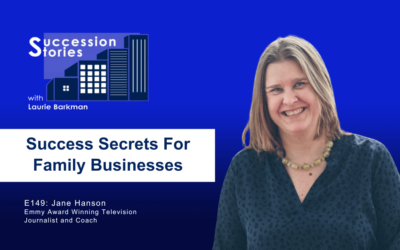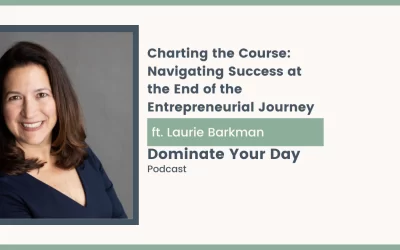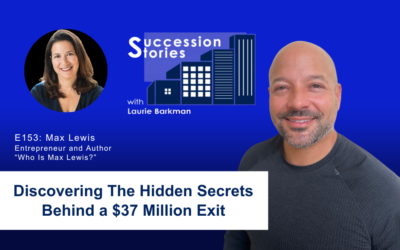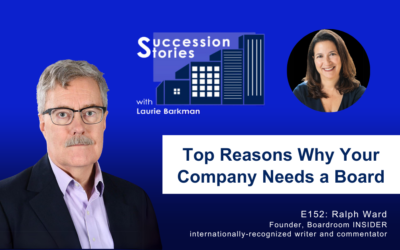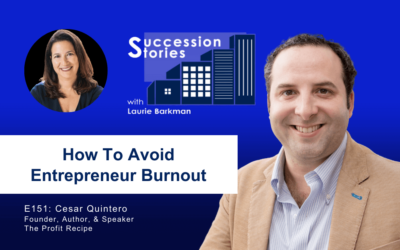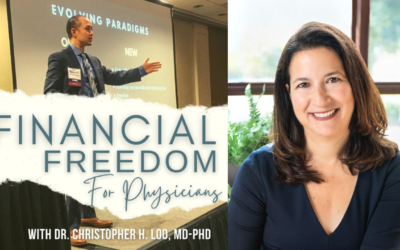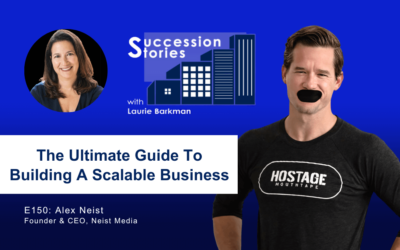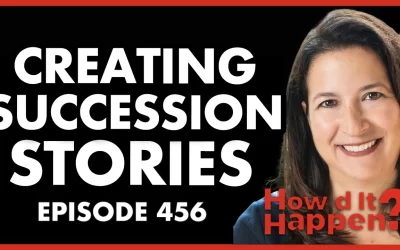How can a services business drive recurring revenue? Andy Cabasso co-founded JurisPage, a marketing services company with a niche audience- specializing in technology and practice management software for law firms. After three years they were bought by a strategic acquirer for 7-figures. Andy’s story will be interesting to anyone wondering how to package their services as products and develop a recurring revenue model – a key value driver.
Listen to learn more about:
- How JurisPage created a recurring revenue stream
- Building a book of recurring revenue to scale your income
- Why turning away one-time revenue projects was difficult but helped build a valuable business
- How to take something like a service like marketing or web design, and turn that into a product that has fixed deliverables
- How using SOPs to build a scalable team– enabling a lean small team to deliver
- Why building these processes can help you become an attractive acquisition target
- Launching his next venture Postaga.com
How to Productize Your Service in 8 Simple Steps [eBook]
Have you ever wondered how to make a business less reliant on its owner? The answer is to “productize” the service.
This is the process of breaking down the service into a series of steps and packing it like a tangible offering. We’ve developed an eBook outlining an 8-step approach to help you productize your service.
Don’t leave your exit to chance.
Stony Hill Advisors works with owners like you to get ready and maximize value when you’re ready to sell.
Visit www.stonyhilladvisors.com/podcast for a complimentary business valuation.
About Succession Stories Podcast
Succession Stories is hosted by Laurie Barkman, the Business Transition Sherpa– guiding business owners through the process from “transition to transaction.” Book an advisory call at: meetlauriebarkman.com
Transcript
Intro:
How can a services business drive recurring revenue? Andy Cabasso co-founded JurisPage, a marketing services company with a niche audience. Just three years later they were bought by a strategic acquirer for 7-figures. Andy’s story will be interesting to anyone wondering how to package their services as products and develop a recurring revenue model – a key value driver. Creating a more valuable business is a key topic in my book that will be launched later this year. You’ll be the first to hear about it, so stay tuned. And now, enjoy my conversation about productizing your services with Andy Cabasso.
Laurie Barkman:
Welcome to Succession Stories. My guest today is Andy Cabasso. Andy, I’m really excited to talk to you and learn about your experience as a co-founder and your journey from creating and launching a business to ultimately selling it and having a successful exit. So welcome.
Andy Cabasso:
Thanks, Laurie. I’m happy to be here and happy to talk about all this.
Laurie Barkman:
Why don’t we start by talking about you and the company that you co-founded called JurisPage?
Andy Cabasso:
Yeah, so it kind of started because I was running a…well, I was in law school, and I realized that I didn’t want to be practicing law, which may be a late realization to have, but at the same time, when I was applying to different law firms to work at, I noticed they all had really bad websites. I had a bit of a marketing background studying in undergrad and a friend of mine, my roommate from college was actually a freelancer doing web design work and so I talked about it with him like, “We could, like there’s a need here, we could do web design and marketing for law firms,” and we started working together.
It became like a little side project, I graduated law school and started practicing law, but I did a good enough job with our marketing that it kind of became its own thing, and it became a full time job. I stopped practicing law, even though I’m still to this day, a licensed lawyer here in New York, even though I haven’t really touched it. The business grew and we did something right, and then eventually was acquired by another company in the legal space. I’ve just skipped to the end here, but that’s kind of how it all started.
Laurie Barkman:
We can circle back on some of those pieces, so you had a co-founder, and did he have a legal background too?
Andy Cabasso:
No. My co-founder actually had like a music industry background, studied music production in college, and as a roommate, I had to be very patient because he was making hip hop beats at all hours of the day and night. Then at some point, he gets into coding and he like, starts building his own products and starts doing freelance web design work, but that didn’t really happen until after we stopped being roommates, which is unfortunate, because the quiet would have been nice, but so we ended up being roommates to the time where he was really into making hip hop beats.
Laurie Barkman:
That’s funny, so is it fair to say both of you were sort of accidental entrepreneurs?
Andy Cabasso:
Yeah. It’s kind of funny how we ended up where we did, because we weren’t like, we hadn’t started businesses when we were first roommates, and we didn’t know that we would end up working together in the future.
Laurie Barkman:
Yeah, absolutely. Let’s talk about JurisPage as a firm, as a marketing firm at the time, and just so we can get a timeline here, you sold the company in 2016. Is that right?
Andy Cabasso:
That’s right.
Laurie Barkman:
And founded it in 2013?
Andy Cabasso:
Yeah, officially, it started in 2013. and sold it in 2016, so yeah, three years.
Laurie Barkman:
Three years is a fast run.
Andy Cabasso:
Yeah, and I wish I could say that, like, “Oh, that was the plan from the beginning,” but in hindsight, how we ended up where we did, definitely a bit of luck, and a little bit of the right planning from the beginning to make it worth acquiring and add an acquisition price that we were all very happy with.
Laurie Barkman:
Let’s talk a little bit about that. First with JurisPage, and you I talked a little bit before the show, and I have a marketing background. We won’t geek out on all the marketing lingo here…
Andy Cabasso:
We can geek out a little bit.
Laurie Barkman:
A little bit, okay, we can geek a little bit. Just to give us a sense, so you found a market niche, you basically found that as you were looking for jobs and looking at lawyers’ websites. They weren’t what you would expect from the prospect standpoint as a potential employee, but then also you were thinking, “Hey, for lead generation, and trying to really develop a brand for these small law firms, you could probably help them,” so that’s definitely a niche. What did you ultimately sell as services, and how did you figure out what to offer and how to offer it?
Andy Cabasso:
Yeah, so a lot of it, a lot of the development of our products came from customer interviews to understand what our audience was interested in. Basically, we refined our pitch and our marketing over time, that there were really basically two kinds of law firms and just gonna categorize this very broadly, but there were the law firms that had the website that was geared towards referrals, people who were getting word of mouth business, and they didn’t really care about their web presence so much, which is why I ended up seeing so many like, in the footer of the website, ‘copyright 2007’, and it’s like, “Oh, gosh, when did you last update this?”, but like, those firms weren’t caring so much, and so they were just like, “I need a good web presence so that when someone finds me online, or when someone gets referred to me, and they look me up online, which they inevitably will, I have a decent enough presence that they’re comfortable hiring me.”
Then there were the firms that were all in on lead generation on trying to get customers from the internet. For them in particular, they needed to be investing because their competitors are investing, and they’re all fighting for those clients that are searching for a lawyer. Because generally, when someone’s looking for a lawyer, they’re at a very bad point in their lives, either they’ve been arrested, or they’ve been involved in an accident, or someone’s dying. Generally speaking, you’re often meeting a lawyer at a very stressful point in your life and there’s a lot of urgency, and so if you’re not getting referred to a lawyer by a friend, you are going online, and in terms of that search, and like really optimizing that whole web experience for getting that visitor to click on your site and give you a call, there’s a lot of urgency there.
For the law firms, each client can be very, very valuable. There are a lot of stakes there, and so you want to really ensure that you best increase the likelihood that they reach out to you and hire you, before anyone else, and so given that, we saw that, all right, there are these two kinds of clients and there’s maybe some overlap, but this is where it was, we were catering all of our content towards education for the firms that weren’t really sure where they fit in, and then gearing our products towards that.
Laurie Barkman:
It’s interesting how you referenced customer interviews, that’s typically where I think a lot of firms fall down is they start to assume they know what the market wants and especially over time, if you get further and further away from your customer, you may lose touch with ultimately, your differentiation potential, and market niche, so I love that you guys started there and segmented the market.
Andy Cabasso:
I will say that we’ve made mistakes, though, so we figured that out, but I will say that. Our first attempt at a product was actually a self-service product we were building. We built a sort of template, the workflow of ‘choose your own website design’, and it would walk you through a very self-service kind of thing, similar to a site builder like Squarespace or Wix or something like that, and that just wasn’t resonating with our audience.
Because like, we were interviewing people who had started the process, or visited us and then just left, and they were saying, here’s the deal, “I am a lawyer who charges $300 an hour, and I don’t have time to figure out how to build my own website, even if it’s easy. You’re still telling me I need all this content, I have to figure out where to put all these things. I’m not a designer. That’s why I’m hiring a designer,” and so that was our first iteration and it did not work out.
Then after, we tried to figure out why this wasn’t resonating. We then did the customer interviews to figure that out, and then it was like, “Oh, yeah, of course that makes sense. We should have probably done that first, before we invested in building this particular process.” That’s definitely a problem that I’ve made in my career, and I know plenty of other entrepreneurs have, which is you’ve got this idea and you’re like, can you maybe throw it around to a few people and you’re like, what is it? How does this sound? And it’s like, yeah, that’s great. Let’s do that, of course, and then it turns out that it just is not sticky with your real target audience and so that effort can be wasted, but it can also be a learning experience.
Laurie Barkman:
Absolutely. A lot of times you do have to keep iterating and learning as you go. That’s an important lesson, a nuance to what you’ve been saying, Andy. You’ve been using the word product and in the introduction, I called you marketing services, so let’s take a moment and talk about that. For the audience, what we’re going to talk about now is how can a services business productize? When you’re talking about your services, you’ve created a sense that it’s a product. Help us understand how you did that and what that meant.
Andy Cabasso:
When a lot of people hire a web designer, they’re thinking, “I’m gonna get a website,” right? And, “I don’t know exactly what it’s gonna look like.” Like it’s going to be a collaborative process and we’re going to do a design and maybe have revisions, and it’s going to take some time. For a lot of designers, the process can be the scope, things can go off the rails, and this is the experience that my co-founder had with his previous freelance design work where he and his clients would have a scope of what the project would be but then there would always be one other thing or one other revision, or, “I don’t like that, let’s start over,” something like that.
Ultimately, what the client wants is the product, the website, but things can go off the rails when things are not clearly defined, and so to make it easy for both the client and for us in terms of delivering that service, we made our web designs fixed products, so with fixed deliverables to say, “You will get a website. Starting out, we have a few different layout options for home pages for you to choose from in terms of inspiration, you can give us feedback on this and this and this, you’re going to have a bio page for X amount of lawyers based on how many there are at your firm, a contact page, a blog page. All of these are very fixed deliverables that the client is going to get with a certain amount of revision rounds, and this is the fixed scope. Importantly, on the design side, by us having this very fixed scope, we can know the entire process and workflow to expect, we can build our team to work on this workflow to say, “Alright, so we’re at this stage, so every project is going to have this these fixed steps to do whether from brainstorming the ideas, to getting the assets that we need from a client, to doing the first design iteration or mock ups and then doing the revision and then doing the final delivery.” By everything having a fixed scope, it ensures that we have kind of like an assembly line sort of process that from start to finish, nothing is going to go off the rails that we’re going to get the client deliverables and get them the site that they’re looking for, and that things don’t take forever and get stuck because that’s like the scope creep, the things going beyond what we had agreed to and what the client had paid for, is a very real thing that can happen.
Having that fixed product for websites, having fixed products for SEO services, or paid search services, was super important to being able to help us grow the business and scale it so that we could, at first, be able to take on more and more clients, and everyone would be along the same product timelines, we can know where every single client is at every stage of the way, but also, for us, help us scale and build our team. By having all of these fixed stages with fixed deliverables and knowing what we’re doing every stage of the way, we could easily onboard new team members to work at each of these steps.
Laurie Barkman:
For pricing, how did you figure out pricing? Was that trial and error on the bundles? Because it’s a cost of materials kind of a thing, if you know how long it takes you to do Package A B versus C, right? Then did you try out certain pricing and it was too high, and then you already realized it was too low? How did you find the right spot?
Andy Cabasso:
It definitely started out too low, which I think is a thing that a lot of designers do, is they price themselves too low. We were like, alright, we want to get our first clients, we also want to have our portfolio that we could show off to new prospective clients and then after we built up that portfolio, we also had these assets that we could reuse and work from.
For example, having like a bunch of different homepage templates that we’d already created for other clients that we could repurpose for new clients with some variations, that would also help us be more efficient to make our designs quicker and in having done 200 let’s say, law firm websites, the bio page for any given lawyer the template the layout for that there are only so many variations of it, that exist. Over time, we had probably like five to 10 variants, but having built those we could reuse those on future projects which would save us time and make it so that we’re like, “Alright, so we have all this time baked into our costs, so we can figure out that, the digging, going from the delivery, like building all these deliverables out and building this project should on average take us X amount of hours now that we like have this library of assets to go from,” and so we could charge a little bit less than some of our competitors.
Because like a lot of the people that we’re competing with, were not just like legal focus marketing agencies, but like local web designers, Mom and Pop people who were like local to a specific city, and who are marketing themselves as, “I am a web designer for businesses in New York, or businesses in Chicago or whatever,” but for a lot of them, this might have been their first time doing a worker’s comp law firm or something like that. We’ve done dozens of workers comp law firms, and we know what their style and aesthetic is, and we could have assets to draw from so we could do the design much quicker, know what their clients are interested in particular, and we have that base to pull from, which I thought made made us a lot more attractive as an option could get us the site’s design much quicker.
Laurie Barkman:
Let’s talk about the team and the process. The team was relatively small, right? How many employees were there, full time employees?
Andy Cabasso:
By the time we sold the agency, there were four of us full time plus some contractors. The full time people we had were I guess two people doing design, one person doing sales, and then me also doing some operations, sales and marketing. Marketing was probably the main thing that I focused on besides operations.
Laurie Barkman:
So you really needed to have your processes locked down. As you described, you had these packages, you had these product bundles and it was a fixed arrangement for a client to choose Package A, B, or C, so how did you ultimately create that efficiency with the team?
Andy Cabasso:
A few things that we did, one, we set up project management software we were using at the time, Trello. But over time, we changed and used different things, we ended up using Podio, which I liked a lot. If I were to start over today, in 2022, I would use something like ClickUp probably just because it’s very, very flexible and very good for creating items with recurring elements to them like having a recurring item for, “Hey, it’s the end of the month, create your monthly reports,” or, “Hey, this client is an SEO client every month they get this,” and so on, and things like that are very, very helpful. Truthfully, I didn’t really see that Trello had all that so much. But that all being said, we had project management software, we created internal documentation, SOPs, standard operating procedures, basically, a guide for each team member in their role to know what to do at every single stage. Really, the idea being if the CEO takes a vacation or disappears for a week, the team wouldn’t be rudderless and they would know what they need to do with any client at any given stage.
Laurie Barkman:
Those SOPs are really important to document but sometimes I see one of my clients where they have things written down. It’s a process that is documented, but it’s not followed, so there’s no accountability. How did you drive accountability?
Andy Cabasso:
It’s important to have your metrics and to know like, alright, so we have, like, we have, let’s say, we have a weekly meeting and with a department head or as a small team, but the person who is in charge of this, we see like this week, okay, we have this many clients in this stage, this stage and this stage. All the clients that are in this stage need us to follow up with them once a week to ask them for their bio materials or content that we’re waiting on for them. Or clients in this stage need this and this so what progress have we made and so having like a weekly standing meeting, as something for you to be accountable to. One other thing that can be helpful here is incentives and bonus pay, so setting goal metrics for where you were like, what you think the role should be capable of doing in any given month or quarter, and bonus metrics for if you hit certain/particular milestones.
Laurie Barkman:
That’s incredible, so you really had a good follow through and with a small team. Now let’s switch gears and talk about selling the company. This was a young company, you were still growing revenue wise, I don’t know if you can share any numbers, but just to give a sense of size. Okay, so we can just sort of imagine here. What do you think were some of the keys to the company’s acquisition? You were not seeking to get acquired, the little bluebird came to you. Give us the background, what happened?
Andy Cabasso:
There were a few things that we had definitely done, writing pieces that we had in place that I think made us very attractive to be acquired. The first thing is, we did a very good job with our own marketing. I would say that, like we really became a brand in our space, we did a lot by way of content marketing, and so we did a lot to educate our audience, and also provided content that wasn’t just related to us, but related to the legal tech space as a whole.
One thing that I noticed is that when a lot of our clients were coming to us, they were looking, often they were looking to revamp their firm or start their own new firm and so for them, it was like, “Alright, so we’re starting brand new, I need a website, I need business cards, I need software now that I’m like investing in this as a solo lawyer.”
For example, once someone who’s like working alone or with like a small team with a paralegal, maybe there are rarely these moments where they’re focusing on the business rather than in the business. Because, in the business, those clients are paying, and you see that money in front of you, you’re like, “Alright, let’s work on these cases.” But working on the business is setting yourself up for the future and in these talks with these lawyers, I was saying, “Alright, so they’re looking at not just not just marketing in their website, but also like, case management software,” and so we started creating a lot of content around case management software, or time management for law firms, and creating ebooks and downloadables, and comparison charts.
That drove a ton of traffic, so much so that these other companies started noticing us and wanting to do partnerships, and co-marketing and that helped us become a lot more well known in our space. Then from that, we would have referral partnerships, we would do co-marketing, webinars sorts of things and so we got well known in our space and that’s kind of what got us the attention of the company that ended up acquiring us, because we ended up having a lot of mutual clients and so for them, they were looking us like, “Alright, so here’s the deal. We’re interested in getting into the legal marketing space. We have a lot of clients of ours that we’re doing, outsourced IT for and every law firm needs a website. We’ve been referring clients mutually, and we have some mutual clients, so are you interested in being acquired?” When they said that to us, I was like, “Oh, I don’t know, maybe?” That was my honest answer.
Laurie Barkman:
It wasn’t on your mind.
Andy Cabasso:
It wasn’t really on my mind. I was just in like, growth mode and so we’re building this agency and then once we got to talking, there was a lot of alignment, not just in terms of our mutual customers, but also our philosophies about building a business for, in particular, for a marketing agency. A lot of work can be project oriented, like one time fee, like you build a website, you give it to them, they pay you a couple $1,000 and then that’s it. But every client of ours was on a recurring monthly service, whether it was at the very least us hosting their website and providing ongoing support so like helping them add new pages or blog posts when they needed to, to over time, also us offering paid search marketing services or SEO services and so every client had some ongoing mark, ongoing package to them and so we had built up this book of business and with every client we were getting, we were increasing our recurring revenue, as well, so what like web design client wouldn’t just be like, a couple $1,000 would be a couple $1,000 plus an ongoing 100 or more per month. As we got hundreds of clients that increased our recurring revenue, which meant that if I were ever to take a vacation and make zero sales, we would still have revenue coming in, which was a real asset for our business. Our business wasn’t just me or our brand. It was our recurring revenue. This recurring revenue that we had was something of value separately.
Laurie Barkman:
That’s awesome. That was going to be one of my questions about one time versus recurring and just for the definition, I think it’s important recurring meaning it has to be canceled, right, that there was either they run a credit card arrangement with you, there was a contract of some sort, which basically kind of like a Netflix right, if you’re going to end your Netflix subscription, you have to literally cancel it, otherwise, they will keep charging you and so you were probably measuring lifetime value, you were measuring cost to acquire and so those metrics as a services firm that had a product, could actually look more like a software company. That’s what software companies measure. They’re measuring subscribers and churn, right, those are metrics that I’m guessing you followed.
Andy Cabasso:
Right and we had very low churn. As we were interviewing our clients, initially, the clients that we wanted to work with were ones that either wanted ongoing marketing, or they wanted to not have to worry about their website.
Truth be told, there were some clients that came, some potential clients that came to us that said, “I just want you to design my website, and then put it on GoDaddy hosting, and then that’ll be it,” and we said to them, “I’m sorry, that is an option with other service providers, but that’s just not our business model,” and they would say like, “I’m willing to give you $3,000 or $4,000 today, just design my website, and then give it to me, and I will leave,” and we said, “Sorry, we’re probably not a right fit for you, because we want to provide you this ongoing service, but we also hopefully want to upsell you to marketing services down the road, and if this is not something that you’re you’re interested in, then we’re not a good fit.” I said this a lot, and it’s kind of scary. Some web designers were like, “You’re turning down money,” but it wasn’t right for our model, working on this one off project while it would have brought some cash in short term, it wasn’t in line with the long term vision and the same goes for taking projects outside our market.
Sometimes CPAs would reach out to us and or people who were referred by a lawyer, like financial planners, and they’d say, “Hey, I see what you’re doing. I know that you do this for lawyers, but could you do this for our CPA firm or something like that,” and we would say, “I’m sorry, we can’t do that because related to how we’ve built up this library of assets related to law firm websites, and marketing, if we were to take on one CPA client, we would have to figure out how to market and build like a CPA focused website.” There might be some differences, but for us to figure that all out, it just wasn’t worth our time because our cost and profit margins that we had were associated with law firm websites and not wanting to build a site that wouldn’t give us anything that we could use moving forward for future projects. It just didn’t make sense to us.
Laurie Barkman:
That’s a hard thing, to walk away when someone’s got money in front of you to say, “Hey, I’m willing to give this to you right now, and you say, “No, thank you,” so that takes a lot of discipline, especially for such a young firm, to have that focus and stay the course, I give you a lot of props for that. That’s a tricky thing.
Andy Cabasso:
It was tough and it’s tough. I know it’s tough for a lot of businesses, when you’ve got like, maybe you’re early on, you don’t have a lot of money coming in but being disciplined about this was like, you had to believe that this was the best for the long term vision of your business. Getting sidetracked with one off projects, they’re just going to be detrimental. They’re going to slow you down from reaching that long term goal.
Laurie Barkman:
That’s a very relatable business situation. When you look back at the acquirer’s conversations with you, they were much larger, right; they’re a much larger entity, and as you said, there was probably some overlap in clients, so there was a cross sell element that I’m sure they were looking for as to why they were interested in you, which opened the door ultimately to get the deal done. As you were getting to know really more about their motivations, what would you say were some of the biggest areas of interest they had? You’re talking about the SOPs, were those of interest to them? Did they like how you brought some of that discipline to the table? Or were they more interested in the recurring revenue aspect and the growth potential that it offered for their business?
Andy Cabasso:
All of the above? I think they saw there was a lot of alignment because all of their offerings were based on recurring revenue, they productized their services as well. Their service was outsourced for law firms and part of their deliverables were, you get virtual machines and access to server space that you can remote into and access all of your law firm’s software and documents and things like that from any device. Now, it could be very technical, like on one hand, you could be like, “Alright, well, I’m renting, I’m getting these servers and paying this and this and this,” but their service which they productize involved like provisioning elements based on headcount at the law firm, and things could have, add ons and so we were very much in line with how we were monetizing our businesses. That just synced up very well.
Then beyond that, it was really attractive for them, the idea of, well, we’ve got these hundreds of thousands of law firms and lawyers that we’re working with and we are to noticing that a lot of them have bad websites and we are talking to them very consistently every day, regarding like their IT needs, we can also cross sell them, pitch their websites, and web design, everything like that and so that potential for them, it was kind of like, well, one plus one equals three sort of situation that they were interested in.
Laurie Barkman:
How long did this process take back and forth? From the first conversation of “Hey, we’re interested in acquiring you,” to you saying, “I’m not sure,” to ultimately getting a deal done? Was it six months/ Longer?
Andy Cabasso:
No, it was probably…it had been three months. It wasn’t that long, or maybe it was, I think, like in December or January, they had reached out to us saying, “Hey, are you going to be at this legal conference that’s coming up? We’re planning on being there. It’s in New York, and you’re in New York?” “Yeah, maybe we’re thinking about being there,” “Also, are you potentially interested in being acquired?” “I don’t know, maybe,” and so we kind of over the next month, I’d say a month or two, we were hashing out what it would look like in terms of the acquisition. What it would look like for us in terms of staying on and what not. We wanted to know what their vision was for our business and really where they thought they could take it that we couldn’t on our own and after we hashed out all that, all the numbers, there was the due diligence process where we had to get all of our books and everything in line so that they could review them and make sure that this is right and besides whatever we were talking about in these meetings, that we could back it up with all these numbers and everything.
Laurie Barkman:
Due diligence can often take some time, and it takes you away from your business with such a small team.
Andy Cabasso:
Yeah.
Laurie Barkman:
That must have been a challenge.
Andy Cabasso:
That was a real nights and weekends sort of thing for sure.
Laurie Barkman:
Yeah, absolutely. You stayed with the company for a bit? Did you have an earnout?
Andy Cabasso:
Yes, I can’t speak too much to that but there was an ongoing component to it.
Laurie Barkman:
You’ve now since left the firm and you’re doing your next thing. We’d call you a mountain climber, someone who’s a serial entrepreneur, looking for that next opportunity you get excited about, about many things. I know you’re a co-founder for a couple of different firms. Tell us what you’re doing today, Andy.
Andy Cabasso:
The genesis of this kind of mixed startup was something that came about that I thought about, from SEO. SEO in particular, for law firms can be very, very competitive because if you are the top ranked in Google for like personal injury lawyer and people search for personal injury lawyer in their city and click on that, and reach out to you and then retain you, the average value of a case can be 1000s upon 1000s of dollars, to the point where the value like the amount that you’re willing to spend to acquire a new client can be hundreds to 1000s of dollars and so the thing is, though, given how competitive Google and SEO is, one thing that we saw consistently was there is a very high correlation with the quantity and quality of links from other websites to your website that increase the likelihood that your website ranks better in Google for any particular search term.
The thing is, the way to get links to your website is often to reach out to other web sites to basically publicize your site to say, “Hey, I saw that you have this article about some topic, I’ve got a piece of content that would dovetail yours nicely, would you mind linking to my article in yours?” That kind of thing, as we were seeing, wasn’t very scalable for either individual companies or agencies so we built Postaga, which is the software that helps with cold email outreach for link building. Over time, it’s also really evolved to not just be for link building, we found that we’ve also have use cases for PR for press outreach to get coverage for your brand, as well as for cold outreach for things like lead generation sales partnerships, affiliates and things like that.
Laurie Barkman:
That’s awesome. Potaga we’ll go check it out. Postaga.com. Is the URL Correct?
Andy Cabasso:
Yep.
Laurie Barkman:
Before we close out the show, I’m going to ask you for your favorite quote in a moment but as we think back to the conversation we just had about launching a firm, growing it, getting into the point where someone wants to acquire it, what would you say are maybe some of the top things that you might have done differently? Or if you don’t have those words of advice, just any words of advice, if someone’s listening and thinking about selling, what would be some of the key things that you’d want them to know?
Andy Cabasso:
Generally for advice for businesses, especially in early stages, I would say really, really do your customer interviews to understand their problems, understand what they really value. I’ve definitely like, as I’ve talked before, I’ve made this mistake in the past where I come up with an idea, and I think it’s great, I share it with a few people and they’re like, “Yeah, that sounds great,” and I share with a few people who are in my target market and they’re like, “That sounds good,” but are they willing to actually spend money on that and invest in that? Is your solution helping them do their job better? Help them solve a problem that they care about solving.
That’s probably a huge thing I’d like to say for early stage businesses in particular, because as entrepreneurs, we have ideas that are like, “Oh, this sounds great,” and, “I’m getting a lot of good feedback,” but you don’t want to spend time building a solution that there’s not a viable market for or potentially not a large enough market for, you may have a product that’s way, way too niche, so I’d say doing that kind of like customer interview thing can help.
More recently, I was introduced to the jobs to be done framework, which I wish I would have learned about years ago but like, it’s been particularly helpful for me as well to like to get a framework for it for this.
Beyond that, I’d say for another piece of advice, as you know, as we’ve been talking about having these SOPs, having these processes, your KPIs and metrics. An important thing that I wish I had discovered earlier was the idea of a business operating system, something like either Eos, also known as traction, or the Rockefeller habits, also called scaling up these days. Having a plan for how to run your business on a day to day, week to week, month, year, sort of horizon and having these like quarterly projects, even easier, long goals and things like that can help keep you on track, much better than the entrepreneur day to day of putting out fires and winging it and just going where your attention takes you. That helps you, I think, have a lot better focus in the long term to really get to the goals that you’re going after.
Laurie Barkman:
Those are great words of wisdom. The jobs to be done framework is really interesting. Just an idea here if you familiar with this concept, there is a great quote and I’m forgetting the the speaker but he said, “Well, do you want the quarter inch drill bit or do you want the quarter inch hole?” And what we really want is a quarter inch hole right, and how we get there is through the drill bit, so that’s one example. Another example is the milkshake. Do you really want the milkshake? Or do you really want this nice cold, refreshing drink to have in your hand when you’re driving your car, or at night, what does a cup of coffee serve for us, so that’s what that means. As we close out, Andy, and we think about favorite quotes, for you, what’s something that stands out or something about entrepreneurship or leadership that you want to share?
Andy Cabasso:
Um, on the internet, no one knows if you’re a dog. I don’t know. I wish I had a really inspiring quote. We talked about this before, and I don’t like inspiring quotes because I feel like they inspire for a second and it’s very fleeting. Instead, I would say, find a framework or a process for you to help you build consistent leadership and build your business. I think the best thing I would refer to is a business operating system like EOS traction or Rockefeller habits, because any quote that I say maybe like, Oh, that’s great. You might also forget it in five minutes, 10 minutes. If you, I guess, want more, maybe long term, something to stay, I would check out like, I’m sorry, this is a cop out, I would check out something geared towards business operating systems that’ll really, I think, help with leadership.
If you want something more narrative, a book that I recommend is, I think, the book called Endurance. It’s about Shackleton’s voyage to the South Pole, which oh my gosh, really harrowing, harrowing, terrifying, scary stuff. That just makes me feel like nothing in comparison, because I have not had to lead a team through the freezing South Pole while my ship was stuck in ice and get my entire crew to safety but I found that that in particular gave me inspiration for the leader that I might like to pick.
Laurie Barkman:
That’s awesome. Andy, thanks so much for sharing your wisdom today. I appreciate how you are so thoughtful about leaving a lasting impression of ways people can learn from you and your words of advice there, and appreciate your time, so thanks so much.
Andy Cabasso:
Thanks, Laurie.

